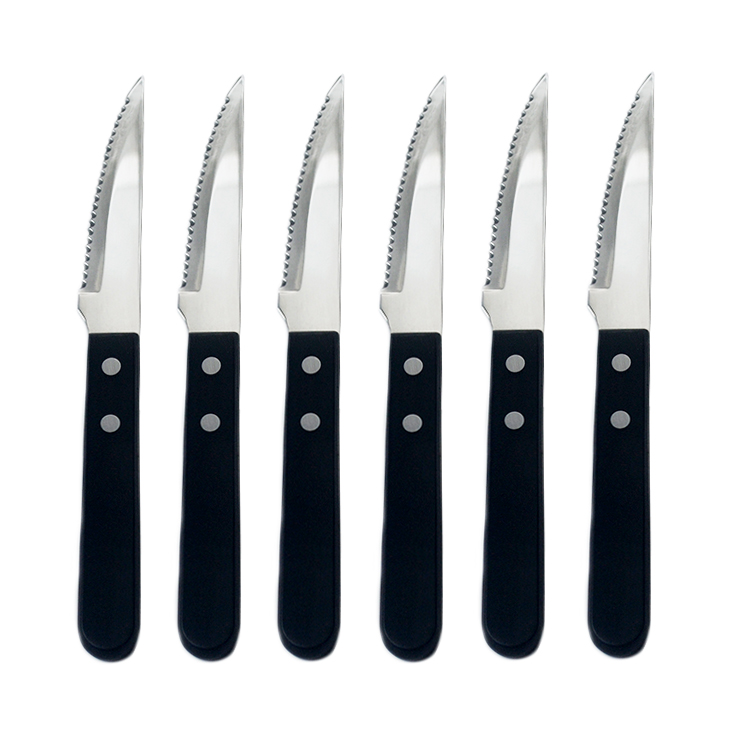Views: 290 Author: Site Editor Publish Time: 2025-11-19 Origin: Site











Content Menu
>> What is Knife Sharpening Angle?
>> Types of Knives and Their Ideal Angles
>>> Kitchen Knives
>>> Outdoor Knives
>>> Specialty Knives
● Techniques for Sharpening Knives
● Tips for Maintaining Knife Sharpness
● Common Questions About Knife Sharpening
>> 1. What is the best angle for sharpening kitchen knives?
>> 2. Can I use the same angle for all types of knives?
>> 3. How often should I sharpen my knives?
>> 4. What tools do I need to sharpen my knives?
>> 5. Can I damage my knife by sharpening it incorrectly?
The sharpening angle refers to the angle between the blade and the sharpening surface. This angle affects how sharp the knife will be and how durable the edge will remain over time. Different types of knives require different angles for optimal performance.
- 15 to 20 Degrees: Ideal for kitchen knives, providing a good balance between sharpness and durability.
- 20 to 25 Degrees: Suitable for outdoor and utility knives, offering more durability for heavy-duty tasks.
- 25 to 30 Degrees: Best for knives that require maximum durability, such as cleavers and some hunting knives.
A lower angle (e.g., 15 degrees) creates a sharper edge, which is excellent for precision cutting tasks. However, this edge is more susceptible to chipping and dulling, especially if used on hard surfaces. Conversely, a higher angle (e.g., 30 degrees) provides a more durable edge, making it suitable for tougher tasks but sacrificing some sharpness.
Most kitchen knives, including chef's knives and paring knives, perform best at angles between 15 and 20 degrees. This range allows for a sharp edge that can handle various food preparation tasks without compromising durability.
Outdoor knives, such as those used for camping or hunting, typically require a sharpening angle of 20 to 25 degrees. This angle provides the necessary strength for cutting through tougher materials like rope or wood while still maintaining a decent level of sharpness.
Specialty knives, such as fillet knives or sushi knives, often have angles as low as 15 degrees. These knives are designed for precision cutting and require a sharper edge to perform effectively.
A whetstone is one of the most traditional and effective tools for sharpening knives. Here's how to use it:
1. Prepare the Whetstone: Soak the whetstone in water for about 10-15 minutes before use.
2. Set the Angle: Hold the knife at the desired angle against the stone.
3. Sharpen the Blade: Slide the blade across the stone, applying even pressure. Start from the heel of the blade and move towards the tip.
4. Alternate Sides: After a few strokes on one side, switch to the other side of the blade to ensure even sharpening.
A sharpening rod is useful for maintaining the edge of a knife between sharpenings. Here's how to use it:
1. Hold the Rod Vertically: Place the rod in a stable position.
2. Set the Angle: Hold the knife at the appropriate angle against the rod.
3. Draw the Blade: Pull the blade down the rod, applying light pressure. Repeat this process several times on each side.
Electric sharpeners offer a quick and convenient way to sharpen knives. Follow the manufacturer's instructions for the best results, typically involving sliding the knife through designated slots at the correct angle.
Honing your knife regularly can help maintain its sharpness. Use a honing steel before each use to realign the edge and keep it sharp.
Store your knives in a way that protects the blade. Use a knife block, magnetic strip, or protective sheaths to prevent dulling and damage.
When using your knives, avoid cutting on hard surfaces like glass or stone, as these can quickly dull the edge. Instead, use wooden or plastic cutting boards.
The best angle for sharpening kitchen knives is typically between 15 and 20 degrees, providing a good balance of sharpness and durability.
No, different types of knives require different angles. For example, outdoor knives may need a sharper angle for cutting through tougher materials, while kitchen knives benefit from a more moderate angle.
The frequency of sharpening depends on usage. If you use your knives daily, consider sharpening them every few weeks. For occasional use, a few times a year may suffice.
Common tools for sharpening knives include whetstones, sharpening rods, and electric sharpeners. Each tool has its advantages, so choose one that fits your needs.
Yes, improper sharpening techniques can damage the blade, leading to a dull edge or even chipping. It's essential to use the correct angle and technique for each type of knife.

Understanding the best angle for sharpening knives is crucial for maintaining their performance and longevity. By following the guidelines outlined in this article, you can ensure that your knives remain sharp and effective for all your cutting needs. Regular maintenance, proper sharpening techniques, and the right tools will help you achieve the best results.